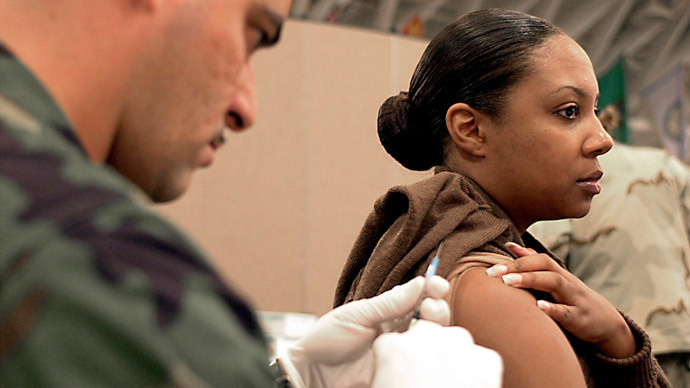GM blood cells to protect tomorrow’s soldiers from bioweapons?

Blood transfusions containing genetically engineered cells could be the future of countering germ warfare, according to new research sponsored by DARPA, which hopes modified blood cells could help neutralize biological toxins deployed against soldiers.
In their research, scientists from the Whitehead Institute for Biomedical Research in Massachusetts were supported by the US Defence Research Projects Agency – renowned for being the scientific funding branch of the US military. The researchers involved said that the US was very interested in deploying the discovery against any biological weapons threats.
“We wanted to create high-value red cells that do more than simply carry oxygen,” says Whitehead Founding Member Harvey Lodish, in a statement published on the Whitehead Institute website. Lodish collaborated with Whitehead Member Hidde Ploegh in the project.
The breakthrough study has been published in the Proceedings of the National Academy of Sciences (PNAS), which harvests Lodish’s expertise in red blood cells (RBCs) with biochemical methods developed in Ploegh’s lab. Referred to as “sortagging,” the approach uses “bacterial enzyme sortase A” to bond between the surface protein and a substance of choice, “be it a small-molecule therapeutic or an antibody capable of binding a toxin.” Such modifications leave the cells unharmed.
“Here we’ve laid out the technology to make mouse and human red blood cells in culture that can express what we want and potentially be used for therapeutic or diagnostic purposes,” Lodish said.

RBC that constitute around a quarter of some 100 trillion cells inside the human body, supply oxygen from the lungs to the organ tissues and circulate for up to four months. The latest methods have shown positive results on laboratory mice, pointing to a near-future possibility of modified RBCs to provide patients with long-term protection.
“Because the modified human red blood cells can circulate in the body for up to four months, one could envision a scenario in which the cells are used to introduce antibodies that neutralize a toxin,” said Ploegh. “The result would be long-lasting reserves of antitoxin antibodies.”
Researchers hope that the method could be used to deliver drugs to human organs and in a number of benign medical treatment practices, such as treating stoke.
DARPA, created in response to the Soviet launch of the Sputnik, was established in 1958 tasked with the development of new technologies for use by the military. “Creating and Preventing Strategic Surprise,” is the company's motto. DARPA’s interest in biological and medical sciences is designed to improve DoD capabilities, “benefit the US military and save American lives.”
In DARPA's own 2008 assessment of the “Bio-Revolution,” the author of the report Jonathan Beard, states that DARPA's research focuses on “protecting human assets, maintaining human combat performance, biology to enhance military systems, and restoring combat capabilities after severe injury.”
Programs in the area of Maintaining Human Combat Performance are aimed at “maintaining the warfighter’s peak physical and cognitive performance once deployed, despite extreme battlefield stresses.”













